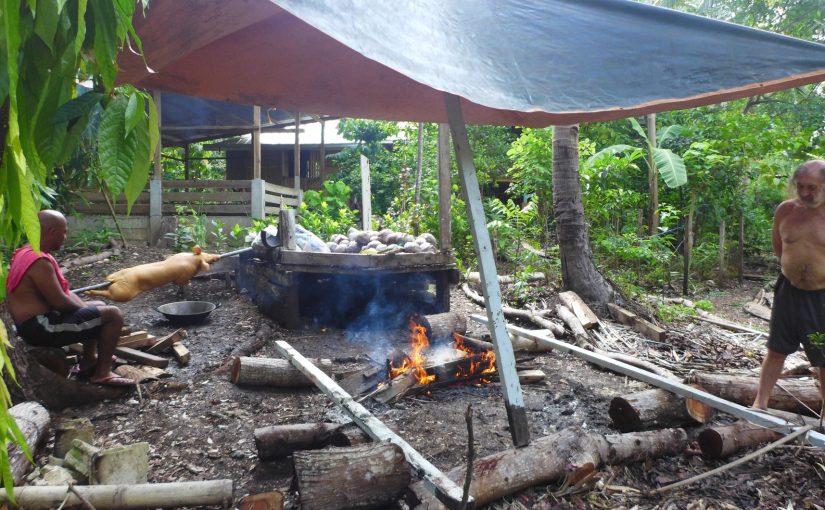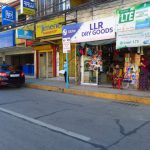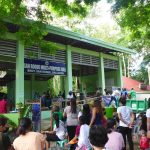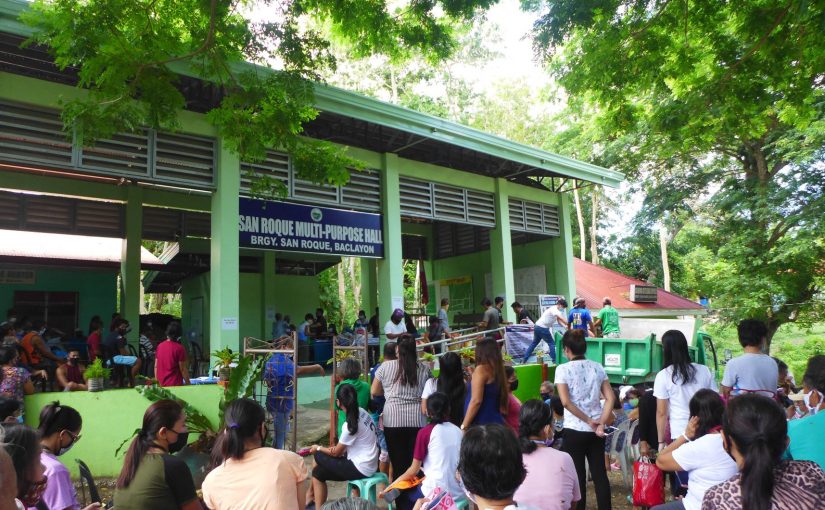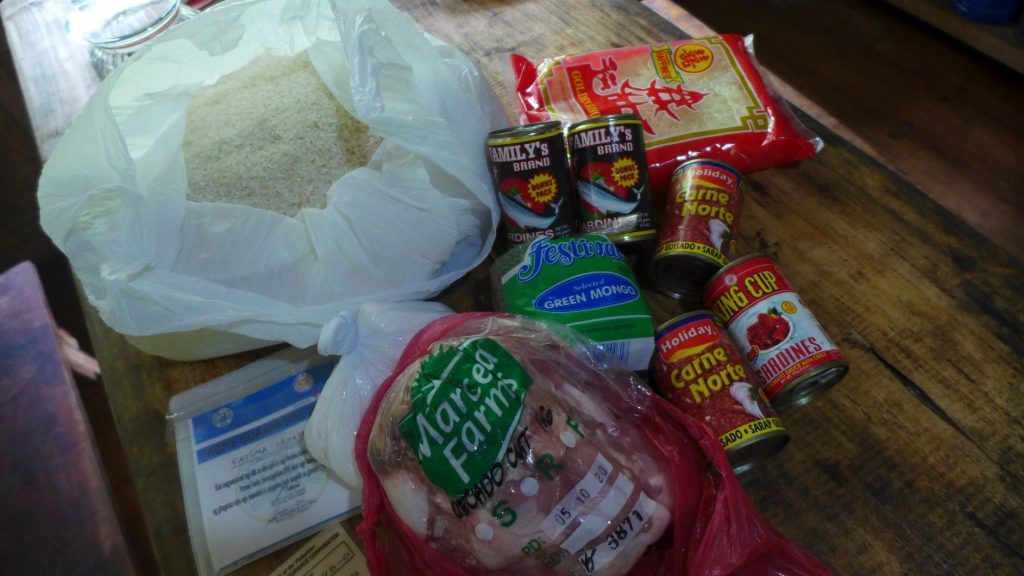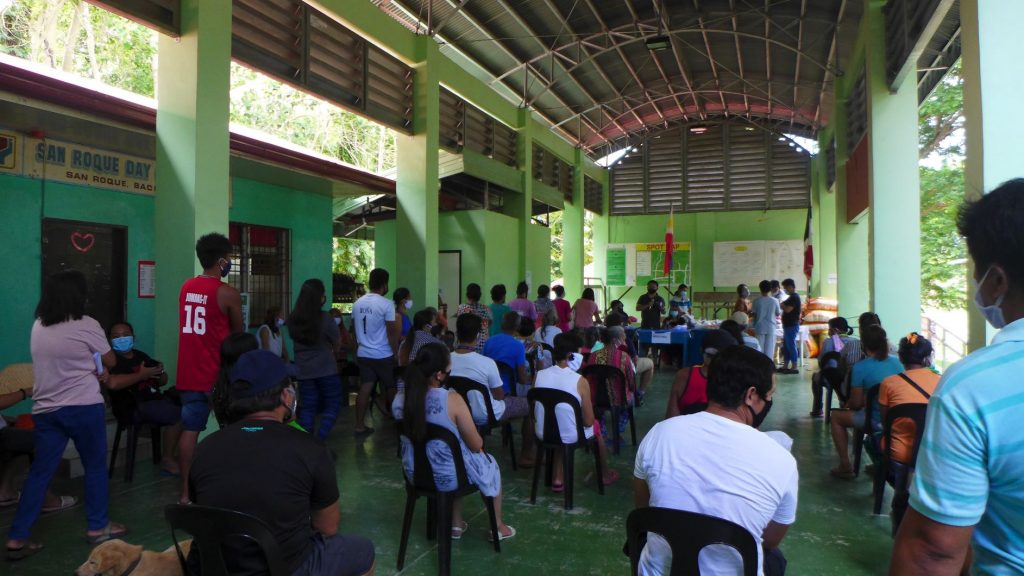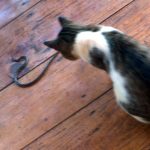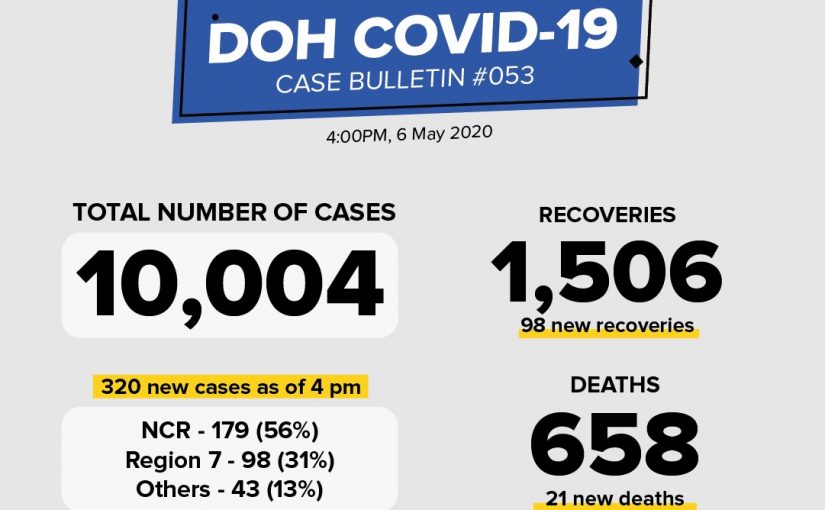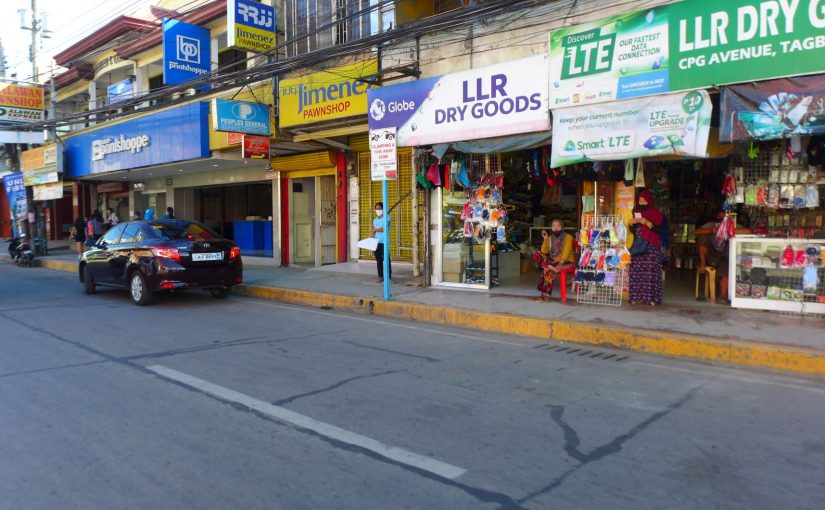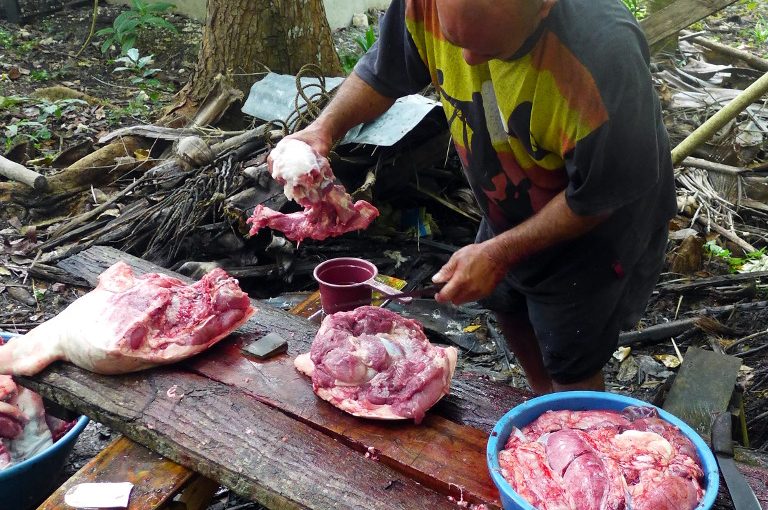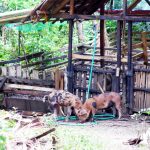I got a pig roasted. A roasted suckling pig is called ‘Lechon.’ This is how it’s often done on our island Bohol. Just backyard roasting. Our butcher Yokyok and his assistant Noel do everything, from slaughter to roasting. Normally, a small pig or weanling is best for roasting, from 15 to 25 kg. 40 kg is also OK. But that wasn’t available. So this is what I got, a 54 kilogram pig. As of now, live roasting pig costs 130-150 pesos per kg (US$2.50-US$3.00), and can get up to 160-180 pesos/kg (US$3.50) during peak season (such as fiesta and school graduation). This one was 140/kg so that’s 7,560 pesos (US$148). The smaller the roasting pig, the more expensive the live weight. Yokyok charges 500 to 800 pesos (US$9-15) for slaughter and roasting. If you order a roasted pig, this size would cost about 9,000 pesos (US$177). It is delivered to your house ready to eat.
Prices may be different in other provinces in the Philippines.

Because this pig is quite heavy, Yokyok needed to make sure the pig is secure. The pig is tied to the metal spit from the inside of the pig (traditionally, people used a straight bamboo spit). The spit Yokyok uses is just a G.I. pipe, about 8 feet long, with a handle attached to one end for manually rotating the pig. There are kits specially for pig roasting, including an electric motor, but we don’t have those. This is the simplest and most primitive but effective for us.


To secure the pig to the spit, it is tied via its spinal column and ribs (shown in photos). Raffia twine is used. To do this, a rib is removed on each side (not sure if that’s obvious in the photos). Legs are also tied to the spit. Seasoning is prepared and rubbed all over the pig, inside and out. If the pig has way too much fat, sometimes the butcher will remove some fat. I think it is more difficult to roast an overly fat pig. Pig is also stuffed with lemongrass, garlic, onion, onion leaves, chopped lemon, fermented black beans. Then the belly of the pig is stitched up really tightly. Notice how sexy the pig is! This process is crucial to ensure the pig will not fall apart or move when it is rotated. Especially a pig this size. Yokyok has roasted a pig of 115 kg! It was not easy and not really recommended! The smaller, the easier and better for everybody.
Anyway, the roasting took 3 hours. During the last hour, a piece of cotton cloth dipped in coconut oil is rubbed all over the skin of the pig to crisp up the skin. After 3 hours, the pig was perfectly cooked all the way through. Awesome flavour, soft meat, and remarkable crispy skin! The skin remained crisp even after the lechon has cooled! Amazing!!
There are regional variations, but here, the seasoning usually consists of: lemongrass, garlic, onion, onion leaves, chopped lemon, fermented black beans, salt, soy sauce, black peppercorns, salt. The most important aromas that enhanced the pork are from the garlic, lemongrass, black peppercorns and lemon.We are still under COVID-19 Community Quarantine. So we cut this up and packed in lunch boxes with pork blood stew, vermicelli and egg noodles and steamed pork buns and distributed to people. Normally we would have a party at home. Still, everyone in the village had lots to eat!
